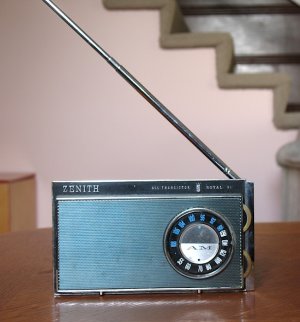I heard KFIR on one of the SDRs from east of Seattle Sunday night. I heard Bill Cunningham's voice and wondered if WGN was making it out that far, but then came the KFIR ID at 10 p.m. Pacific/1 a.m. Eastern for me.
It was definitely listenable but not strong. Occasionally it would fade behind KIRO slop.
This is a station I'm not familiar with, so I wasn't aware that it would essentially block WGN in the Northwest.
Until one gets far enough away from the Seattle-Tacoma metro, the station that blocks WGN isn't KFIR, which I've only definitely heard once or twice, but KIRO itself, which is a splashmaster. Not complaining -- they're local, and radio is a business, the station's been around forever, the programming's OK, and they employ a lot of people. But 720 and 700 are mostly toast in my section of South King County maybe 20 mi SE of Seattle, thanks to those 50KW at night. One can look at the RadioLocater and the effect of the night pattern is pretty accurate.
Of course, with many portables having 1 khz bandwidths available, it's probably more possible if you get 70-100 away from the transmitter. But KFIR wouldn't be that much of an issue if you're using a good portable with a directional antenna. At least in my estimation.
I've been able to log KDWN maybe a handful of times since the 1990s. KFIR maybe once or twice. 700 is hard to DX, KXLX Spokane comes in rarely through the splash and there's a station in Oregon I used to hear periodically. And the new one in Calgary? I think I logged that one. But it was tough sledding.
Other parts of the NW, yeah, 720 KFIR might be an issue, depending on which way you have your radio oriented -- but whenever I've DXed from Eastern WA, the big Midwest flamethrowers are more accessible -- depending on DX conditions, of course. I used to hear the big Chicago stations in the late 1980s when in Eastern WA, and I believe I once heard a NYC station -- can't recall which, and the log is shoved away in a closet somewhere. But I believe I heard one on my GE Superadio I.
No chance of that here, west of the Cascades, unless a) you're using a Beverage or similar highly directional longwire, b) conditions are awesome, and/or c) both. And Chicago stations only come in when conditions are good. Both of the more heard ones in this location are near locals, which doesn't help.


